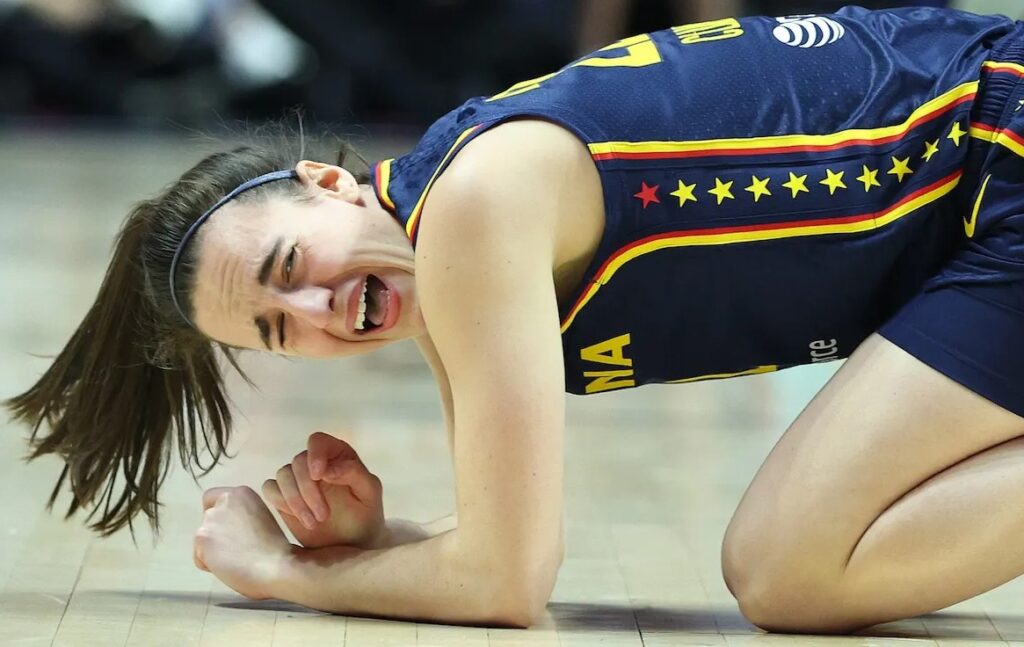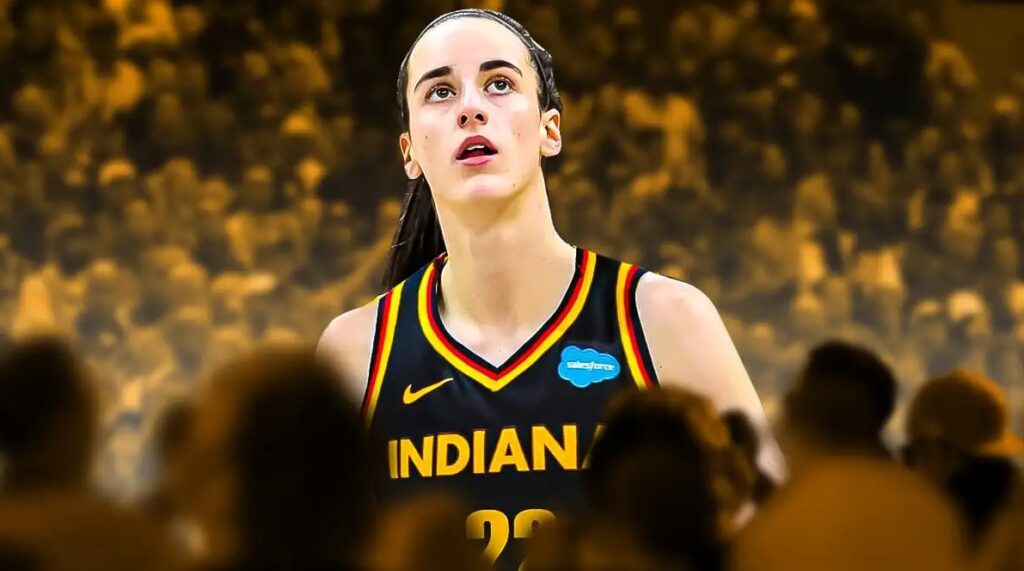Caitlin Clark, Controversy, and a League Unprepared: Christine Brennan’s Bestselling Book Reveals the Truth Behind the Headlines
Christine Brennan, a seasoned journalist and one of the most respected voices in sports media, has never been afraid to tackle uncomfortable truths, and in her latest book about Caitlin Clark, she doesn’t just write about basketball — she writes about power, perception, and the cultural fault lines running through women’s sports in America.
The book, which quickly ascended to the top of the New York Times bestseller list, has ignited passionate conversations far beyond the hardwood, because it does something few sports books dare to do: it unearths the tension, the silence, and the raw emotion that surrounds one of the most polarizing — and beloved — young athletes of our time.

In an exclusive and wide-ranging interview conducted shortly after the book’s release, Brennan opened up about the process of writing the book, the political minefield Caitlin Clark stepped into, and how the WNBA, caught flat-footed by her meteoric rise, scrambled to adapt to a new era that came much sooner than anyone expected.
One of the most talked-about revelations in the book involves Caitlin Clark’s reaction to being left off the 2024 Olympic roster — a decision that Brennan says “did not just surprise Clark, but deeply wounded her,” especially given the immense media attention and record-breaking fan support she had brought to the sport in just her rookie season.
According to Brennan, Clark was informed about the decision in a phone call that lasted less than five minutes, and while she maintained composure in public, those close to her described the moment as one of profound disappointment, not simply because of the missed opportunity, but because of what it symbolized: a resistance from the basketball establishment to fully embrace her disruptive presence.
Brennan’s book carefully traces the timeline of events that led to the WNBA’s sudden decision to provide chartered flights for all teams — a shift that had been resisted for years due to budget concerns, yet became unavoidable once Clark entered the league and began generating unprecedented television ratings, sponsorship deals, and public scrutiny of player conditions.

She details how several owners and league officials privately admitted they were “completely unprepared” for the scale of attention Clark would bring, and how there were frantic behind-the-scenes meetings — some even involving media executives — aimed at avoiding a public relations disaster as footage of cramped commercial flights began circulating online.
Equally fascinating is Brennan’s analysis of WNBA Commissioner Cathy Engelbert’s curious approach to Clark in public statements, including what Brennan calls a “conspicuous refusal” to mention Clark’s name when discussing league initiatives, which the book interprets as a strategic attempt to avoid the appearance of favoritism in a league where veteran players have voiced resentment about unequal media treatment.
Throughout the interview, Brennan reflects on the sharp contrast between covering male and female athletes, explaining how, in her experience, male athletes are often allowed to be polarizing or arrogant without it defining their entire career, while female athletes like Clark are constantly walking a tightrope between confidence and likability — a dynamic that fuels both admiration and backlash.
She also underscores how this double standard impacts media coverage, noting that while male players are routinely praised for being competitive or outspoken, female players — particularly young, white, and highly visible ones — are more likely to be framed as “divisive,” especially if their success arrives quickly or disrupts long-standing locker room hierarchies.
One particularly telling moment in the book involves a WNBA veteran who, speaking anonymously, admits to feeling “genuinely conflicted” about Clark, saying that while they respect her game, they resent the fact that the league appears to be reshaping itself around her, despite the decades of groundwork laid by others who never received the same level of attention or endorsement deals.
Yet Brennan does not paint Clark as a passive victim or unintentional lightning rod — rather, she shows how Clark herself is learning to navigate these complexities, including her efforts to build relationships with teammates, avoid fueling media-driven rivalries, and use her platform to speak out about issues without appearing overly calculated or politically charged.
In one of the most candid sections of the book, Brennan reveals that Clark has been receiving weekly media coaching sessions since the WNBA draft, not because she lacks communication skills, but because her representatives understand the intensity of the spotlight she’s under and the way every phrase she utters is dissected across cable news, TikTok, and sports talk radio.

The book also dives into the financial implications of the “Clark effect,” pointing out that her presence has already led to increased ticket sales in every city the Indiana Fever visits, while also helping the WNBA secure new broadcast deals and sparking fresh interest from corporate sponsors that had previously ignored women’s basketball altogether.
What Brennan makes clear — and what perhaps makes the book so urgent — is that Caitlin Clark is not just a basketball player; she is a cultural force, a brand, and, in many ways, a symbol of generational change, for better or worse, in a league still grappling with questions of equity, identity, and the uneasy intersection of business and activism.
When asked whether she believes the WNBA is ready to fully embrace what Clark represents, Brennan pauses before offering a response that feels more like a challenge than an answer: “They have no choice anymore — she’s here, and she’s not going anywhere.”
Ultimately, the book’s greatest strength may be its refusal to simplify — it does not position Clark as a flawless hero or the league as a villainous gatekeeper, but instead invites readers to sit with the tension, the contradictions, and the emotional complexity that comes with watching a young woman try to change an institution that wasn’t ready for her.
Christine Brennan’s Caitlin Clark and the Shockwave in Women’s Basketball is more than just a sports biography — it’s a deeply reported, often uncomfortable, and profoundly necessary examination of how we treat greatness, especially when it arrives in the form of a young woman who refuses to apologize for wanting more.